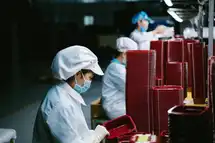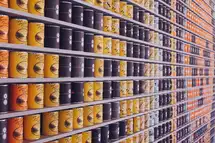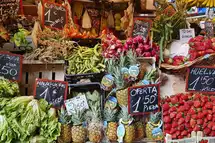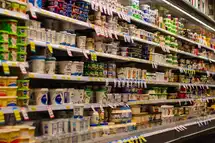What is food safety and sanitation?
Food safety is the practice of ensuring that food is clean, safe to eat, and free from contaminants. Sanitation is the process of keeping food clean and free from bacteria, viruses, and other microbes.
How to Ensure Your Workers Follow Food Safety And Sanitation Practices
What is Food Safety and Sanitation?
Food safety is one of the most crucial aspects of the food industry. It refers to the handling, preparing, and storing of food to prevent foodborne illness. Food businesses are required to transport food from one place to another. Food is prone to get contaminated when it travels from the farm, to the factory, to dining tables. Proper and safe food handling practices and procedures are implemented at every stage of the food production life-cycle and the supply chain to curb any risk of foodborne illnesses.
On the other hand, sanitation involves creating and maintaining practices to avoid food contamination. The key to food sanitation is cleanliness -- it starts with personal hygiene and safe handling of food during preparation. In addition, food sanitation requires the cleanliness of equipment and facilities, and personal hygiene practices by food handlers before and during the production and preparation of food. Following key sanitation guidelines can reduce the risk of foodborne illness.
If you get sick after eating a specific food, and there are similar cases of others falling sick after eating the same food, you may be a victim of a foodborne disease outbreak.
Food safety and sanitation are intrinsic to a food safety management system. It is a system that is put in place to make sure that food is safe to eat and free from contaminants. A food safety management system is designed to prevent consumer health hazards. It does this by following procedures to ensure quality control and compliance with international standards and regulations set by the state and/or federal government. These procedures must be strictly followed by food business operators.
The Centers for Disease Control and Prevention (CDC) has a program called Foodborne Disease Outbreak Surveillance System (FDOSS). Through this program, CDC collects and reports data on foodborne disease outbreaks in the United States. FDOSS is part of the National Outbreak Reporting System, which also includes data on illnesses from contact with animals, environmental contamination, person-to-person spread, waterborne transmission, and other enteric illnesses.
Why is it Important to Keep Food Safe?
The safety of the food we consume plays an important role in protecting us from health risks, food allergies, and foodborne illnesses. To ensure food safety and prevent Food Poisoning, product managers must be aware of common allergens and sources of contamination. By working with other people who specialize in these areas, product managers can help create a safer food environment for everyone.
Proper processing and handling procedures are one part of the equation, but there are other reasons why food safety should be a priority.
Safe food products guard businesses from penalties and legal action. Fines and legal action could spell disaster for a company, causing it to close down or, in extreme cases, go bankrupt. That's why it's so important for businesses to do everything they can to ensure their food products are safe. Facilities that process or serve food can initiate adequate food safety measures by ensuring, first and foremost, that Food Handlers are trained and educated in food safety practices.
Foodborne illness is a serious problem in the food industry.
Proper sanitation and hygiene are essential to prevent the spread of disease.
5 Food Safety and Sanitation Practices
The United States Food and Drug Administration (FDA), a federal agency of the Department of Health and Human Services, recommends five key food safety and sanitation practices that should always be followed in the kitchen- cleanliness, separation of food, cooking temperatures, chilling temperatures, and storage. By following these simple guidelines, the risks of foodborne illnesses can be mitigated.
1. Cleanliness- During food preparation, it is important to keep all kitchen surfaces, utensils, cutting boards and hands clean to prevent the spread of bacteria. To clean surfaces, wash them with hot soapy water. To clean hands, wash them often with warm water and soap.
2. Separation- To avoid contamination, raw meat, poultry, fish, and eggs should be kept separate from cooked food. Raw meat should also be kept away from other raw ingredients like produce or grains.
3. Cooking temperatures- Cooking temperatures are important to note because they can help ensure that your food is free from harmful bacteria. When it comes to meats in particular, use a food thermometer to check the internal temperature before serving. This way, you can be sure it has been cooked long enough to kill any potentially dangerous bacteria.
4. Chilling temperatures- Bacteria can grow quickly at warmer temperatures, so it's important to keep perishable foods refrigerated at 40 F or below, or frozen at 0 F or below. Thaw frozen meat in the fridge itself, or by using cold water or a microwave, but never thaw it on the counter. The growth of bacteria spurs at temperatures between 40 F and 140 F.
5. Storage- When it comes to food storage, you want to make sure you're using clean containers made of material that won't contaminate the food. This means using containers made of plastic or glass. Once you've opened up a can of food, it's important to transfer the contents into a clean container. This is because cross-contamination can be dangerous if these foods are left in their original packaging.
5 Ways to Ensure That Your Staff Follows Safety and Sanitation Rules
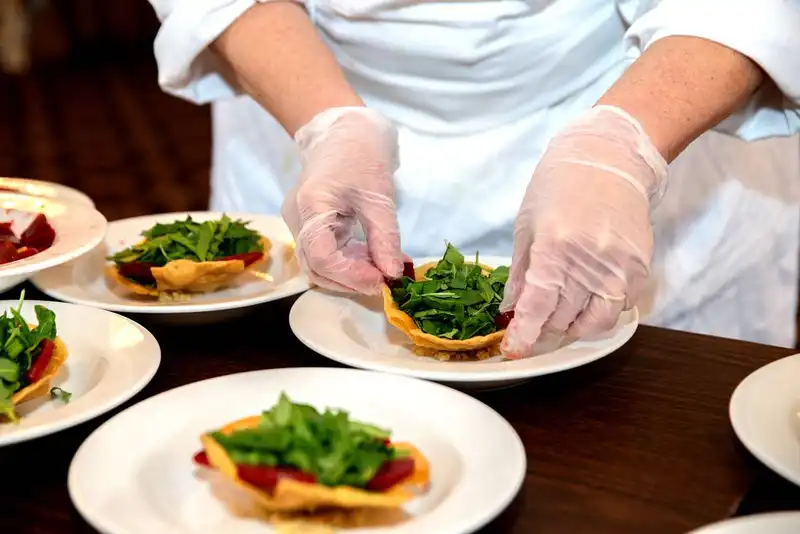
Ensuring food safety has always been a priority in the Restaurant Industry. A new threat, however, Covid-19, brought about an entirely different perspective on how a restaurant business is run. It is no longer enough to ensure better staff hygiene, many additional measures are needed as well -- from cleaning and sanitizing surfaces frequently, social distancing, stricter standards of hygiene, masking up, to contactless serving and delivery -- everything defines how a restaurant business operates.
Any food business needs to take steps to make sure its staff, especially its food handlers, are following correct sanitation and safety procedures. Here are five ways to make sure your employees are sticking to these crucial rules-
- It helps to educate your staff on the importance of proper sanitation and safety procedures. They must understand why these procedures are necessary and how to protect themselves, their coworkers, and your customers from contamination. Organize a team-building exercise to show how proper sanitation creates a healthy work environment for everyone.
- You can help keep your employees and customers safe and healthy by creating a written set of sanitation and safety rules. Be specific in your expectations, such as requiring staff to wash their hands regularly and often, wear gloves when handling food, and clean surfaces frequently. Not only will this help create a safer work environment, but it will also show your employees that you care about their well-being.
- Employees need to know that you're serious about rules and regulations being followed at the workplace. If you witness anyone violating a rule, deal with the issue immediately. This will let them know that if they want to keep their job, following mandatory procedures is non-negotiable. If an employee comes in sick, it's important to have a procedure to deal with them. Send them home immediately and tell them not to come back until they're symptom-free for at least 24 hours. This will help prevent the spread of illness at your workplace.
- To maintain a clean and safe workplace, inspect it regularly for compliance with sanitation and safety rules. Ensure that all surfaces are cleaned, that employees wash their hands properly, and any potential problems are addressed immediately.
- Rewarding employees who follow safety and sanitation procedures encourages others to do the same. When everyone wants to earn recognition and incentives, the work environment becomes healthier and more positive.
Benefits of Food Safety Management Software
Food Safety Management software does much more than give you a leg up on the competition -- it's now a legal requirement for food service operators to have a handle on food safety and sanitation. The FDA website estimates that 48 million cases of foodborne illnesses occur in the country annually. This works out to one in six Americans each year. Every year, foodborne illnesses result in an estimated 128,000 hospitalizations and 3,000 deaths. Some of the benefits of employing efficient Food Safety Management software include-
- Fewer food product recalls or returns- Food Safety Management software helps keep the quality of food high at every stage of the supply process. The software provides a central location for information that helps businesses produce and distribute food and beverage products while meeting safety regulations. It helps avoid recalls and negative publicity and saves money by reducing waste and improving efficiency.
- A trustworthy relationship with customers- Food safety software can help restaurant operators keep track of supplier compliance, manage recall plans, and investigate customer complaints. Restaurant operators can avoid potential problems and keep their customers safe.
- Easier to obtain regulatory certification- A food safety management system based on ISO 22000-2018, FSSC 22000, or HACCP is a strategic commitment for your organization to improve its overall food safety performance. The benefits of implementation include providing safe food consistently; and products and services that meet statutory and regulatory requirements and customer expectations.
- Compliance with food laws- FSMS software is designed to help your organization meet food safety regulations. The software can help you plan, implement, and evaluate food safety procedures. It can also help you maintain and improve food safety compliance.
Running a food business is difficult enough, but when you don’t follow proper food safety, it can be downright dangerous.
Food safety is an important topic that every food business needs to take seriously.
Top 3 Food Safety Management Software Solutions

ZipHACCP-
This food safety management software makes it easy to implement your food safety management program by sending you alerts about potential hazards. With this software, you can see what employees are doing in real time and ensure they follow standard food safety procedures. Should violations occur, you'll be alerted immediately to take action. This way, you can be sure that your food quality standards are always met.
The Zip HACCP app is ideal for business owners and managers who can't always be on-site. This app allows users to analyze alerts, review records, and issue follow-up measures and corrective action remotely. Plus, with solutions integrated into the app, employees can control food safety issues by referring to hazard controls, temperature solutions, and corrective action checklists. The Zip HACCP app can be downloaded from Hubworks, a restaurant industry app store.
Safefood 360-
This FSMS software has been designed to help food companies manage safety, quality, and compliance, all in one place. This system offers workflows for food safety and quality management that automatically update to stay compliant with international regulations and standards, so your company can always stay ahead of the curve.
The software provides a way for users to have all their records available in one place, and these can be accessed any time. Reports can be generated with just one click, and the software will automatically send email and SMS notifications to alert users when necessary. The software also helps users follow HACCP safety plans, the code of practice, and contamination control. Additionally, it provides features for glass and plastic control, auditing, and management review.
Food Connex-
One size does not fit all in the food industry, which is why Food Connex offers a range of options, from integrated systems to software designed for specialized needs. So whether you're a farm-to-table co-op that must automate to continue growing, a distributor or processor that needs a fillip to manage its food products, or a large-scale processor and distributor in search of an integrated ERP solution, Food Connex is a good fit for all.
Food Connex can help you protect your brand. Its automated traceability and lot tracking allow you to track your food products easily. It also has instant recall reporting, so you can quickly withdraw any product that might be contaminated.
Final Word
Food safety and sanitation are central to every food business. A thoroughly examined and reviewed food safety and sanitation plan helps ensure that all federal food safety regulations, whether set by the Food and Drug Administration (FDA) or other state or federal bodies, are strictly followed.
In addition, this plan reassures customers that the food products they consume meet all safety standards and are of high quality.
Furthermore, implementing a proper food safety system helps ensure the safe and hygienic handling of inventory from farm to fork, trains professionals to handle food, and assists in obtaining necessary certification.
Food safety is not a priority for many food businesses.
That’s why foodborne illnesses are a major problem in the food industry.













































